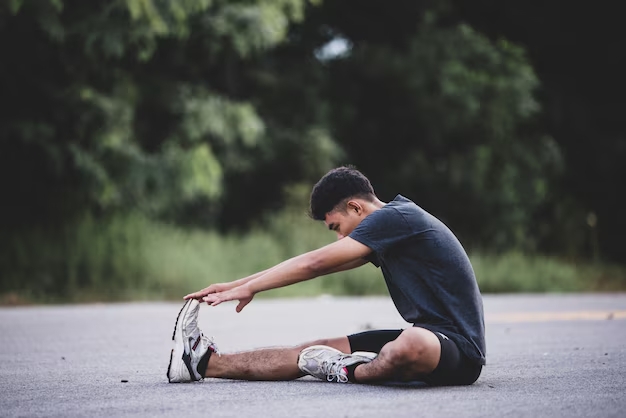Introduction
Running is an incredible way to stay fit, de-stress, and enjoy the outdoors. It’s accessible, affordable, and has countless physical and mental health benefits. However, running comes with its challenges—chief among them, the risk of injury. Whether you’re a beginner lacing up your first pair of running shoes or a seasoned marathoner, injuries can disrupt your training and progress.
But the good news is that most running injuries are preventable. With the right strategies, habits, and understanding, you can minimize risks and keep running consistently. In this blog, we’ll dive into the common causes of running injuries, explore strategies for prevention, and answer some frequently asked questions that will help you stay on track—literally!
What are the most common running injuries?
If you’ve been running for any length of time, you might have experienced or heard about certain injuries that seem to affect runners frequently. These injuries typically result from repetitive motion, overuse, or biomechanical issues.
The most common running injuries include:
- Shin Splints: A sharp pain along the front of your lower leg. This injury often occurs when runners increase their mileage or intensity too quickly.
- Runner’s Knee: Officially called patellofemoral pain syndrome, this is characterized by pain around or behind the kneecap. It’s often caused by poor alignment or weak quadriceps muscles.
- Plantar Fasciitis: This condition leads to stabbing pain at the bottom of the heel and is caused by inflammation of the ligament supporting the arch of your foot.
- Achilles Tendonitis: Pain and stiffness in the Achilles tendon, which connects your calf muscles to your heel, is a common overuse injury in runners.
- IT Band Syndrome: Pain on the outside of the knee or thigh due to inflammation of the iliotibial band, often caused by improper training or weak hip muscles.
What are the leading causes of running injuries?
Understanding the causes of running injuries is key to prevention. Many injuries stem from doing too much, too soon. A sudden increase in mileage or intensity can strain your muscles, tendons, and ligaments beyond their capacity to recover. Improper footwear is another major culprit—shoes that don’t provide enough support or have lost their cushioning can increase the risk of injury.
Other causes include poor running form, inadequate warm-ups and cool-downs, and ignoring small aches that could signal the beginning of an injury. Every runner is different, so factors like running surface, body mechanics, and even diet can play a role.
The Core of Running Injury Prevention
Prevention begins with a solid foundation of good habits. The first step is learning to listen to your body. Pain isn’t something to power through; it’s a signal that something isn’t right. Here’s a detailed look at how to prevent injuries:
1. Prioritize a Gradual Approach
Many running injuries occur because of overtraining. Gradual progress is crucial—aim to increase your weekly mileage by no more than 10%. If you’re just starting out, consider alternating between running and walking to allow your body time to adapt. Rest days are not negotiable; they’re as essential as your training days.
2. Invest in the Right Gear
Your running shoes are your most important piece of equipment. Visit a specialty running store to get fitted for shoes that suit your foot type and running style. Replace your shoes every 300–500 miles to ensure proper support and cushioning.
3. Strengthen Supporting Muscles
Incorporating strength training into your routine can work wonders. Focus on exercises that target your core, glutes, and hips. Squats, lunges, and planks help stabilize your body, absorb impact, and improve your running form.
4. Master Your Form
Good running form reduces the strain on your joints and muscles. Keep your head up, shoulders relaxed, and arms swinging naturally by your sides. Land softly on your midfoot to avoid jarring impacts.
5. Warm Up and Cool Down
Dynamic stretches before a run prepare your muscles for activity. High knees, leg swings, and butt kicks are excellent choices. After your run, cool down with static stretches to relax your muscles and maintain flexibility.
6. Cross-Train
Adding activities like swimming, cycling, or yoga to your routine can prevent overuse injuries and keep your fitness levels high while giving running muscles a break.
What should I do if I get injured?
Despite your best efforts, injuries can still happen. The most important thing to remember is not to push through the pain. If you feel significant discomfort, stop running and give your body time to heal.
For minor injuries, the R.I.C.E. method (Rest, Ice, Compression, Elevation) is often effective. Avoid activities that aggravate the injury, and consult a healthcare professional if the pain persists. Physical therapy or targeted exercises may be necessary for recovery.
Final Thoughts
Preventing running injuries is about consistency, preparation, and self-awareness. By adopting healthy habits like gradual progress, wearing the right gear, and maintaining good form, you can significantly reduce your risk of injury. And while it’s tempting to push your limits, remember that rest and recovery are just as important as training itself.
Running is a lifelong journey that rewards persistence and patience. By taking care of your body and respecting its limits, you’ll not only avoid injuries but also improve your performance and enjoy every step of the way. Stay safe, and happy running!

